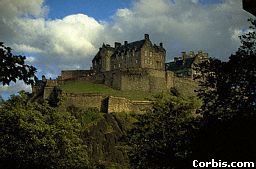| Group | Germanic (with Norwegian, German, etc.), West Germanic (with English, Frisian etc.) |
| Geography | Mainly Lowlands of Scotland |
| History | Scots is a product of the mixture of several different languages, and not only Germanic. Picts, a non-Indo-European nation, lived here in prehistoric times, but then Romans from England and Gaels from Ireland pushed them north and settled here in Scotland. Then in the 5th century AD Angles coming from Germany and Denmark established several kingdoms in this region and slowly repelled Celtic and aboriginal population to the Highlands. But certainly, Germanic colonists acquired many words and place names from the Celtic and maybe even the Pictish language. The 9th language was the beginning of severe Viking intrusions into Scotland. They settled here, mixing with the Anglian population and creating an ethnic group of Scots. |
| Phonetics | The phonetics avoided the Great Vowel Shift in English, and still uses many sounds which were lost by Middle English like pure Indo-European [a], [u], [o]. Diphthongs are quite numerous, including such as oa, ou, ey etc., and some of them do not have correspondent sounds in English, e.g. ui, pronounced like German . Consonant are also sometimes different from English, like ch which sounds like [kh]. |
| Nominal Morphology | The noun lost its declension, though not long ago it could have feminine
or masculine gender. The plural is formed by the marker -s,
but irregular plurals are more frequent than in English: cou - kye
'cow - cows', ee - een 'eye - eyes', etc. There are four
grades of demonstrative pronouns, while English uses just two:
singular this tha thon yon plural thir thae thon yon |
| Verbal Morphology | The verb is not conjugated. Still, Scots is more archaic than English, preserving more irregular verbs. The Past tense is marked with the ending -t / -it, Infinitive has a particle ti. |
| Lexicon | The lexicon includes numeropus loanwords from English, especially in terms of culture and technics. Also tere are many Cletic and Scandinavian elements. |
| Writing | Latin alphabet |
| Close Contacts | Very close to English (sometimes considered as its dialect). Many borrowings from Scottish Gaelic. |
| Sample | The kintra we nou ken as Scotlan his bin pairtit bi leid fur
mair nor twa thousant yeir. In the Roman Eild, the Britons byded in the
south o the kintra an thair leid wis a forebeir o modren Welsh. Bit in
the unvinkisht north they spak Pictish, o whilk puckle is kent. Whan the
Romans quat, new invaders cam in, the Gaelic- speikin Scotti frae Erlan
in about AD five hunner an the Angles frae Northumberlan tha spok a norlan
kin o Anglo Saxon.
The country we now know as Scotland has been divided by language for more than two thousand years. In the Roman Age, the Britons lived in the south of the country, and their language was relative to modern Welsh. But in the north people spoke Pictish, of which little is known. When the Romans left, new invaders came, the Gaelic-speaking Scotti from Ireland in about AD 500, and the Angles from Northumberland who spoke a northern variety of Anglo-Saxon. |
| Picture |  |
| More info |